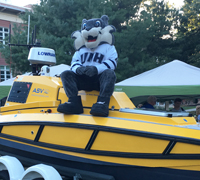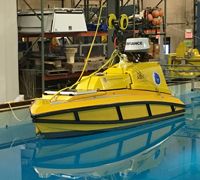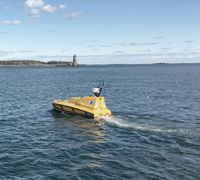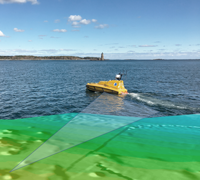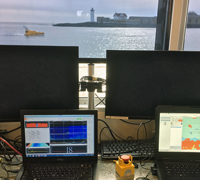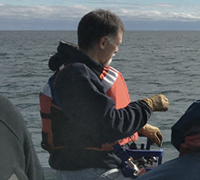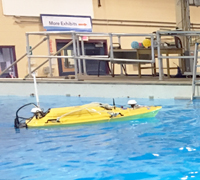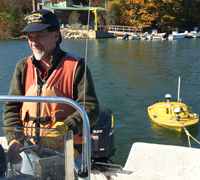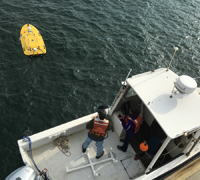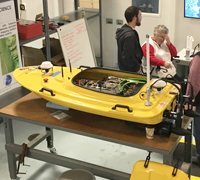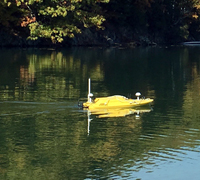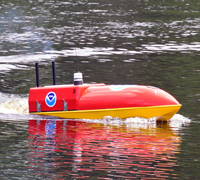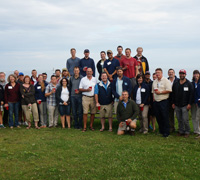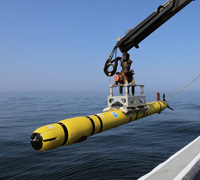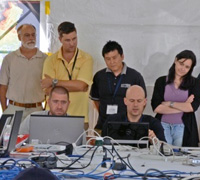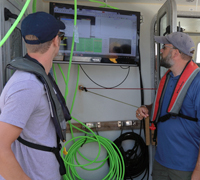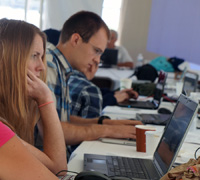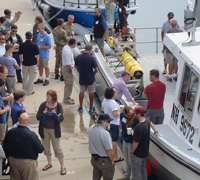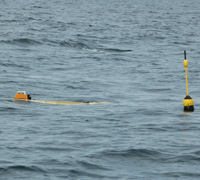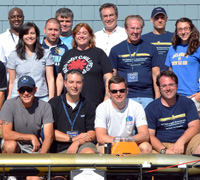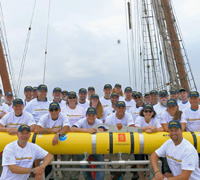Autonomous Systems
CCOM/JHC researchers are exploring methods to automate hydrographic data collection and processing. Robotic vehicles, whether operating submerged or on the surface, can automate data collection when equipped with state-of-the-art hydrographic survey gear and oceanographic sensors modified for use on robotic platforms. New algorithms and data processing methods are being designed that can stream-line processing on the vessel in real-time and in post-processing ashore. The goal is to simplify the painstaking effort of producing the highest quality hydrographic data for nautical charting.
Research involving robotic vehicles is centered in MARVeL—the Marine Autonomous Robotic Vehicle Laboratory, headed up by Val Schmidt. MARVeL provides a fully equipped laboratory for field support of robotic operations at sea, as well as rapid prototyping of new sensors and algorithms at home. MARVeL engineers and scientists routinely operate both autonomous underwater vehicles (AUVs) and autonomous surface vehicles (ASVs), evaluating their design for hydrographic and oceanographic applications as part of our ongoing research and development to make these free-swimming robots standard scientific tools.
C-Worker 4
Autonomous surface vehicles (ASVs) may someday provide largely hands-free data collection with the potential to provide better quality data with greater efficiency than traditional manned survey operations. Thus ASVs are a primary focus of the MARVeL group. As a proof-of-concept, in 2016 the Center acquired BEN, the Bathymetric Explorer and Navigator. BEN is a “C-Worker 4” model robotic vehicle co-designed and manufactured by ASV Global LLC. The system provides a research platform with enough endurance to undertake production survey operations while developing and testing various modes of operation, vehicle behaviors, control algorithms and tight sensor integration.
Click the preview images below for larger, expanded views.
Z-Boat and EMILY
Smaller platforms such as the Teledyne Oceansciences Z-boat and the Hydronalix EMILY boat provide the ability to quickly test new subsystems. These vessels are 2-man portable and, as such, can provide a complete hydrographic survey platform for quick response—particularly for shallow water operations. Moreover, their control interfaces may be easily interfaced, providing platforms for rapid prototyping of new behaviors and algorithms.
Click the preview images below for larger, expanded views.
Bootcamp
In addition to ASVs, robotic autonomous underwater vehicles (AUVs) remain of great interest for mapping applications requiring high resolution data in deep water that surface vessel-navigated systems cannot provide, clandestine survey for military applications and rapid, repeatable seafloor ground-truthing and habitat mapping. AUVs have been shown to provide meaningful increases in production survey efficiency when combined with other survey operations. However, to meet International Hydrographic Organization (IHO) standards for hydrographic surveys, special care must be taken in the integration of sensors aboard the AUV and the processing of data.
To increase the state-of-the-art of hydrographic survey from AUVs the Center holds regular workshops with industry, department of defense and academic participants. “AUV Hydrographic Bootcamp,” as the event is known, provides a forum for engineers, hydrographers, AUV operators and software developers to learn about the issues, discover new problems, and develop solutions in real-time. Stay tuned for our next event!

